|
|
British/English Ships; First, Last, Oldest
|
 Archimedes, SS — British steamship First ship propelled by a screw drive. The advantages over side paddlewheel propulsion persuaded the Royal Navy to build the steam sloop-of-war HMS Rattler, the first British warship to adopt a screw propeller. LAUNCHED: 1839, October 18 → FATE: Sank in the Meuse River during a storm on March 1, 1864. |
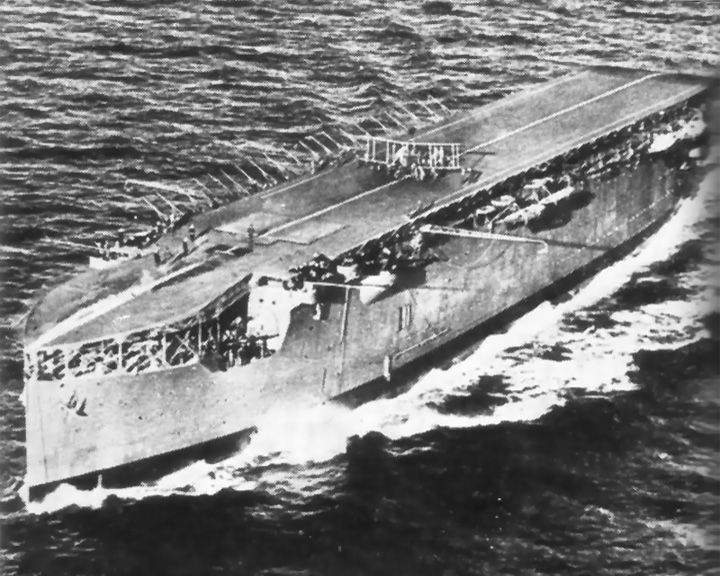 Argus, HMS — British aircraft carrier First Aircraft carrier to have a full flight deck and a lift. She was built from the incomplete Italian ocean liner Conte Rosso and served extensively in both world wars. LAUNCHED: 1917, December 18 → FATE: Scrapped December 1946. |
 Belfast, HMS — British town-class cruiser One of only three surviving bombardment ships which supported the D-Day Normandy Landings in 1944 of World War II, firing probably the first or second salvo. She spent 33 days in support of the D-Day landings and fired over 4,000 6-inch and 1,000 4-inch shells. LAUNCHED: 1938, March 18 → FATE: After much preservation work, she is on exhibit, located on the River Thames next to Tower Bridge at the Port of London. |
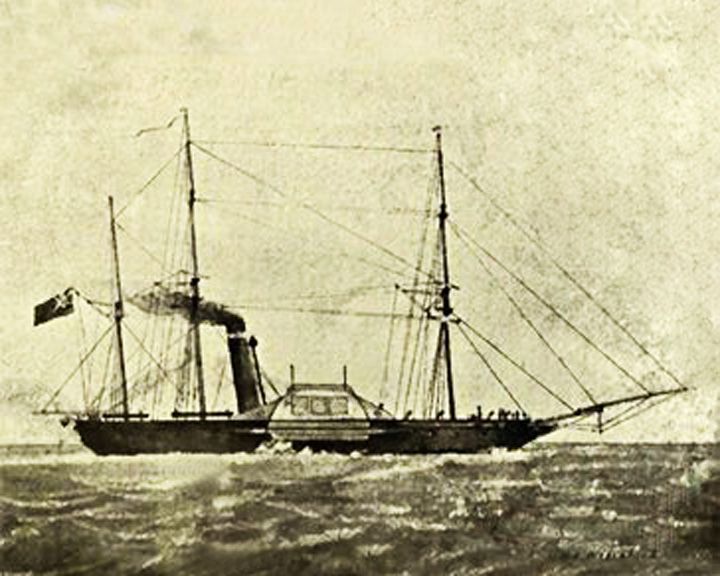 (Another (Another Birkenhead, HMS — British frigate, steamer The protocol "women and children first" originated on this sinking ship. Only 193 of the 643 people on board survived. Over the years, numerous attempts have been made to salvage the gold thought on board. LAUNCHED: 1845, December 18 → FATE: Struck a hidden reef and sank February 26, 1852. |
 (Another (Another Challenger, HMS — British corvette; steam-assisted Undertook the first global marine research expedition. She was the flagship of the Australia Station between 1866 and 1870. LAUNCHED: 1858, February 18 → FATE: Broken up for her copper end in England in January, 1921. |
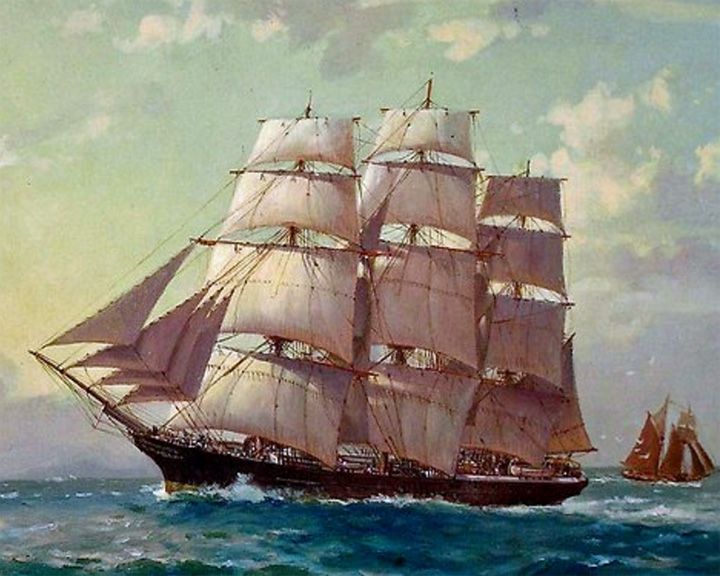 City of Adelaide — English clipper ship The world's oldest surviving clipper ship. From 1864 to 1887, she played an important part in the immigration of Australia. She is now part of the National Historic Ships of the United Kingdom. LAUNCHED: 1864, May 18 → FATE: Out of service since 1948, current being restored. |
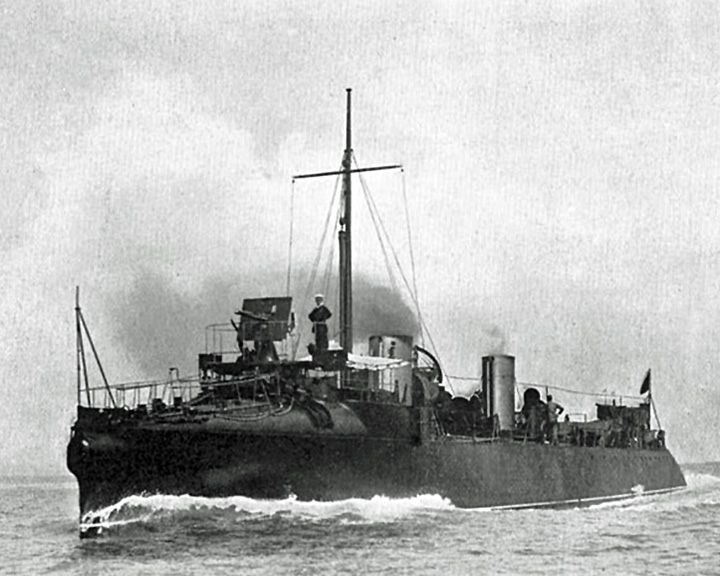 Darling, HMS — British torpedo boat destroyer First destroyer-type ship. Created to defend against torpedo boats. She was described at the time as the "fastest boat ever" having achieved a speed over 28 knots. LAUNCHED: 1893, November 18 → FATE: Scrapped in 1912. |


|
Page 2
|
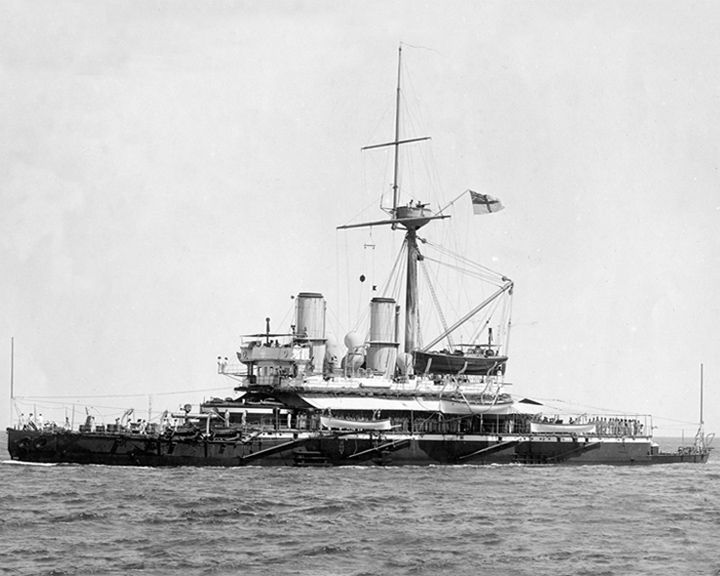
Devastastion, HMS — British Devastation-class ironclad The first ocean-going capital ship not carry sails, and the first with the entire main armament mounted on top of the hull rather than inside it. Originally conceived as a ocean-going breastwork monitor, she was redesignated as 2nd Class Turret ships in 1886 and finally as 2nd Class Battleships by the 1900. LAUNCHED: 1874 → FATE: Was scrapped in 1908. |
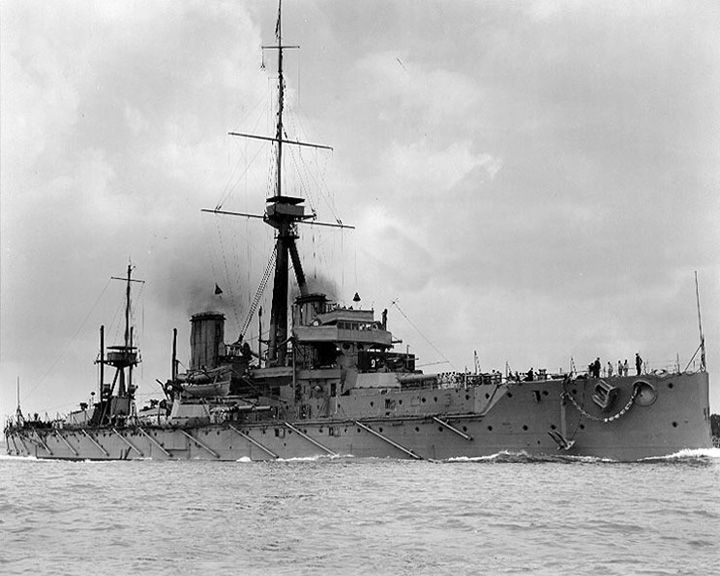 Dreadnought, HMS — British dreadnought battleship First "all-big-gun" armament and steam turbine propulsion. She revolutionized naval power and started a naval arms race. LAUNCHED: 1906, February 18 → FATE: Sold for scrap in 1923. |
 Driver, HMS — British side-wheeler paddle sloop First steamship to circumnavigation the globe. She was the first steamship to visit New Zealand, arriving January 1846, and was involved in the New Zealand Wars. LAUNCHED: 1840, December 18 → FATE: Wrecked on Mayaguana Island on August 3,1861. |
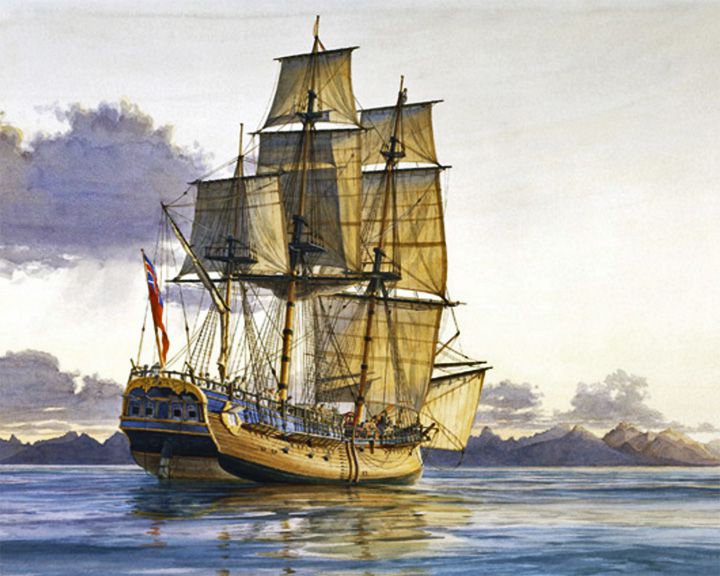 (Another (Another Endeavour, HMS — British collier, three-masted; refitted in 1768 for the expedition James Cook's ship during his voyage to explore the Pacific Ocean and Terra Australis Incognita. She became the first ship to reach the east coast of Australia at Botany Bay in April 1770, and went on to circumnavigate the world. LAUNCHED: 1764, June → FATE: Later renamed Lord Sandwich. Scuttled in a blockade of Narragansett Bay, Rhode Island, in 1778. |
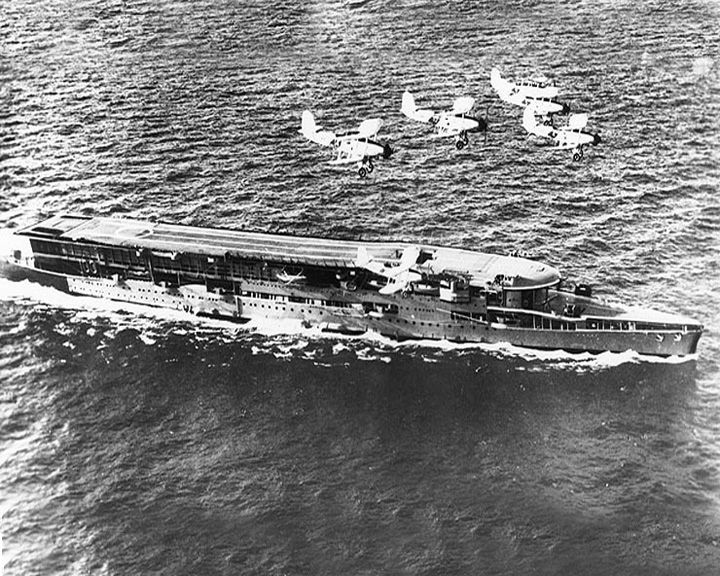 Furious, HMS — British battlecruiser (modified while under construction as an aircraft carrier) First aircraft carrier; her forward turret was removed and a flight deck was added in its place. Spent last of World War I and much of World War II as an aircraft ferry. LAUNCHED: 1916, August 18 → FATE: Sold for scrap in 1948. |
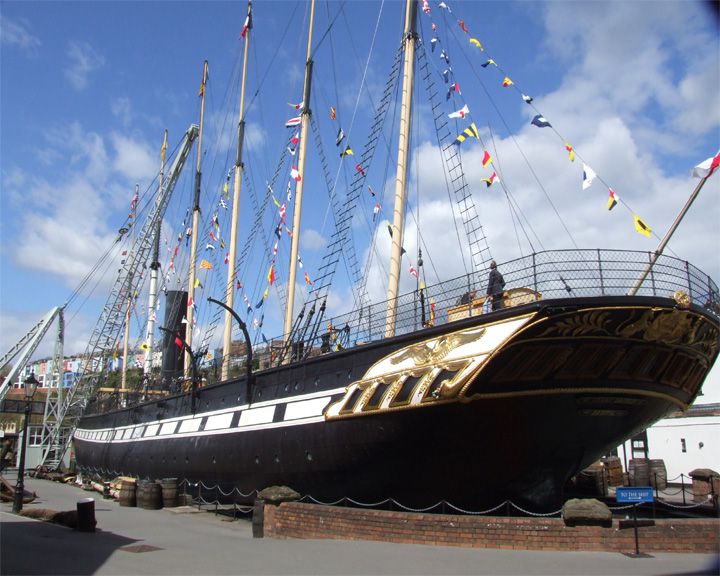 (Another (Another Great Britain, SS — British steamship, passenger ship First steamer to cross the Atlantic. Also first built of iron and with a screw propeller. She ran aground in 1846 and was sold for salvage, repaired and revised. In 1881 she was converted to sail. In 1937 she was retired and scuttled. In 1970 she was recovered and eventually restored as a museum ship. LAUNCHED: 1845, July 18 → FATE: Now a museum ship in Bristol Harbour. |
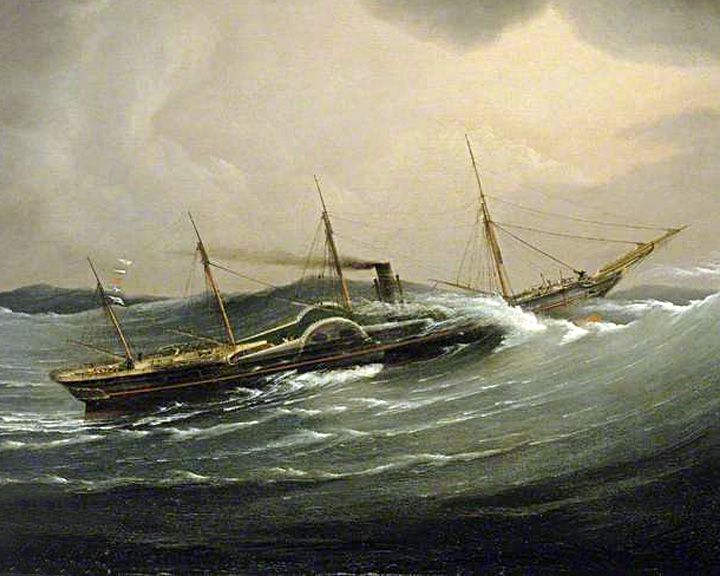 Great Western, SS — British paddle steamboat, side-wheeler First paddle ship built for crossing the Atlantic; completed the crossing in April of 1838. In later years, she was used as a showboat, a floating palace/concert hall and gymnasium. LAUNCHED: 1837, July 18 → FATE: Taken out of service December of 1846, she was broken up in 1856. |
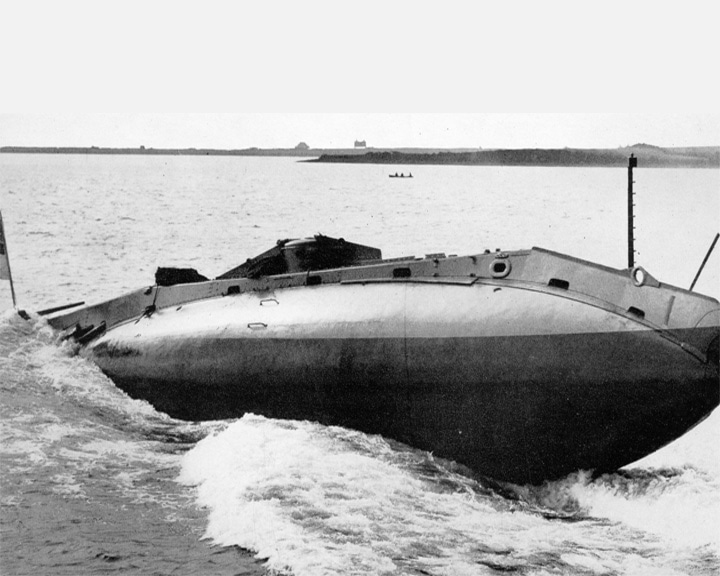 Holland I, HMS — British submarine The first submarine commissioned by the Royal Navy. While being towed to the scrapyard she sank in bad weather off the coast of Eddystone lighthouse. LAUNCHED: 1901, October → FATE: On display at Royal Navy Submarine Museum, Gosport. |
|
Page 3
|
 Hood, HMS — British battle cruiser Last battle cruiser built by Britain. Of the 1,418 aboard, only three men survived. LAUNCHED: 1918, August 18 → FATE: Sunk by the German battleship Bismarck at the Battle of the Denmark Strait May of 1941. |
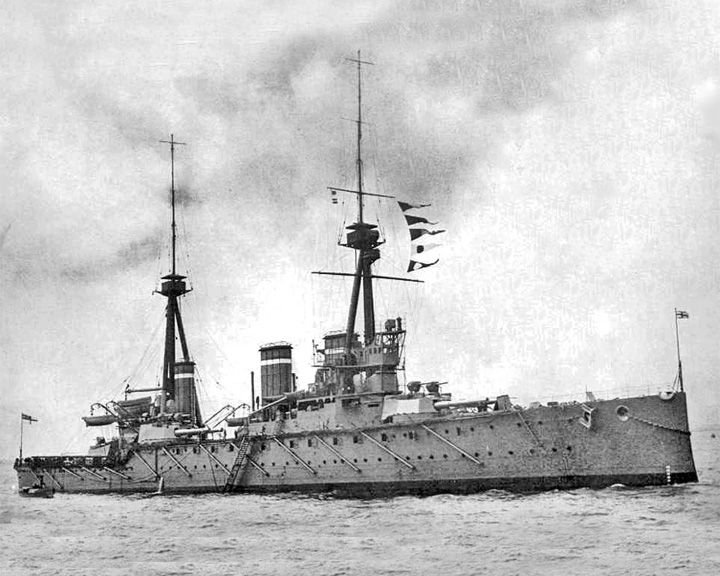 Invincible, HMS — British battlecruiser First battle cruiser to be built by any country in the world. She is one of seven ships named Invincible in the British navy from 1747 to the present. LAUNCHED: 1907, April 18 → FATE: Sunk by the German battleship SMS Lützow at the Battle of Jutland, May 31, 1916. |
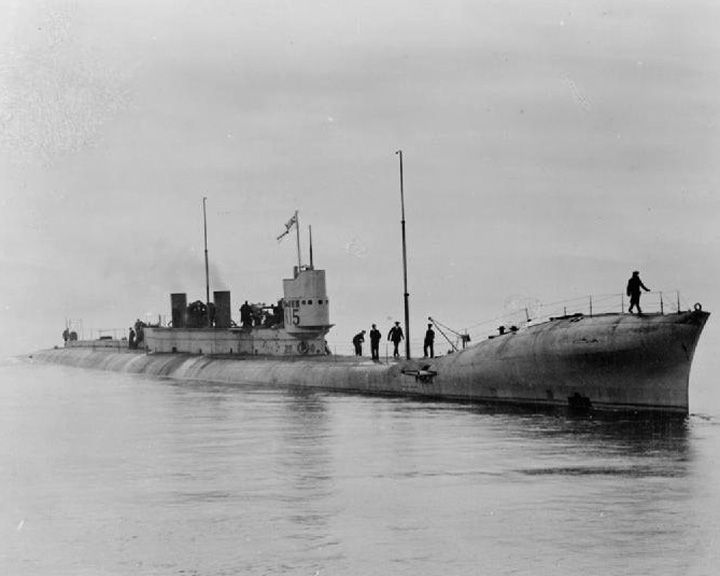 K-13 — British K-class submarine The first in the class of the steam-powered submarines. She sank in an accident during sea trials in early 1917 and was salvaged and recommissioned as HMS K22. 32 people died in the accident and 48 were rescued. LAUNCHED: 1916, November 11 → FATE: Sold for scrapping December 16, 1926 in Sunderland. |
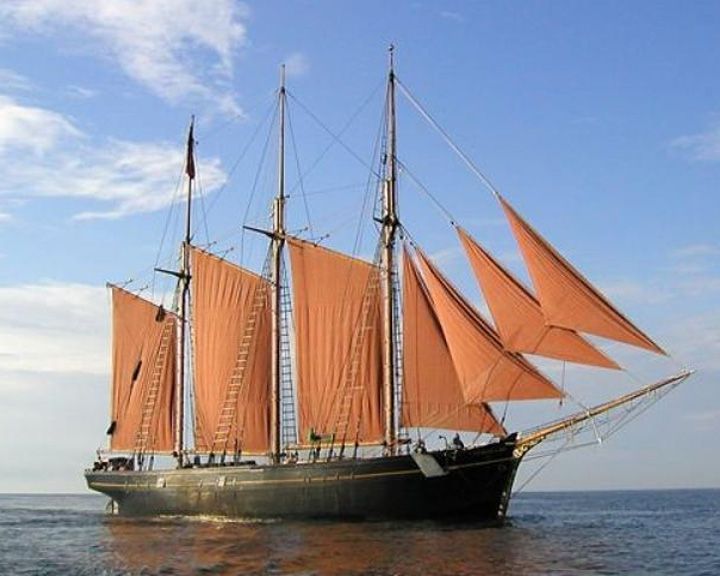 Kathleen and May — British three masted schooner Last remaining British built wooden hull three-masted top sail schooner. Originally equipped with the first known fitting of Appledore roller reefing. After years of service, during restoration in 2000, 70% of the original planking was stripped from the frames, enabling most of her internal timbers to later be refitted. LAUNCHED: 1900, April → FATE: Restored and based in Bideford on the River Torridge. |
 Lightning, HMS — British torpedo boat The first ship to launch self-propelled torpedos. She was used exclusively with HMS Vernon, a torpedo school ship at the Royal Navy's Torpedo Branch at Portsmouth, England. LAUNCHED: 1876 → FATE: Scrapped in 1896. |
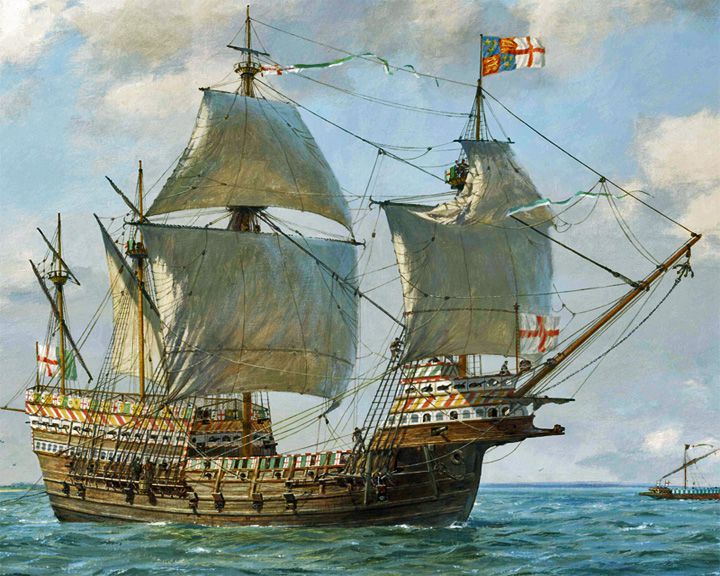 Mary Rose — English carrack-type warship One of the earliest ships built for war sporting the innovation of gun ports. The wreck of the Mary Rose was rediscovered in 1971 and salvaged in 1982. LAUNCHED: 1512 → FATE: Sank in the straits north of the Isle of Wight, 1545. |
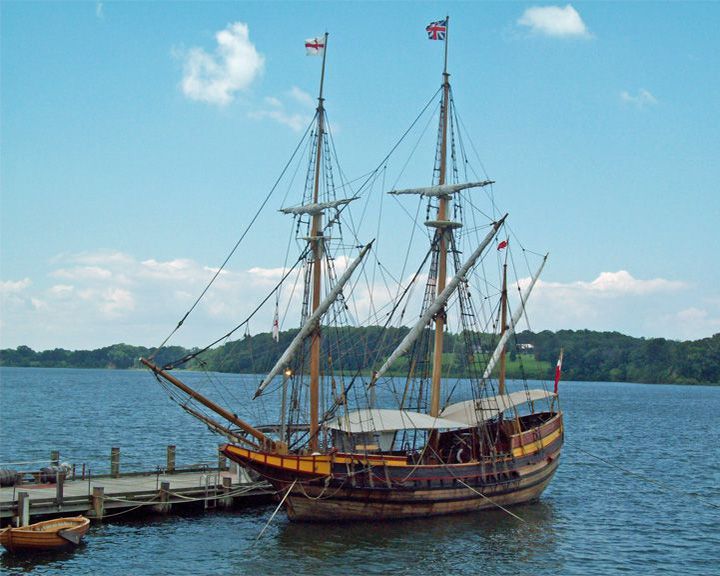 Maryland Dove — American merchant vessel Replica of the Dove, one of two early 17th-century English ship that, in 1634, brought the first settlers to what is now Maryland. The original Dove was the smaller of the two ship, used in shallow waterways along the coast. The accompanied ship with 140 passengers was the Ark. LAUNCHED: 1978, August 18 → FATE: On exhibit at Historic St. Mary's City and occasionally other ports. |
 Matthew — English caravel Sailed by John Cabot, first European to reach North America. Apparently, she was a small ship of fifty tons carrying twenty men and food for seven or eight months. LAUNCHED: 1496, or earlier; replica launched 1996 → FATE: Original ship, unknown; replica on display at M Shed Museum, Bristol, England. |
|
Page 4
|
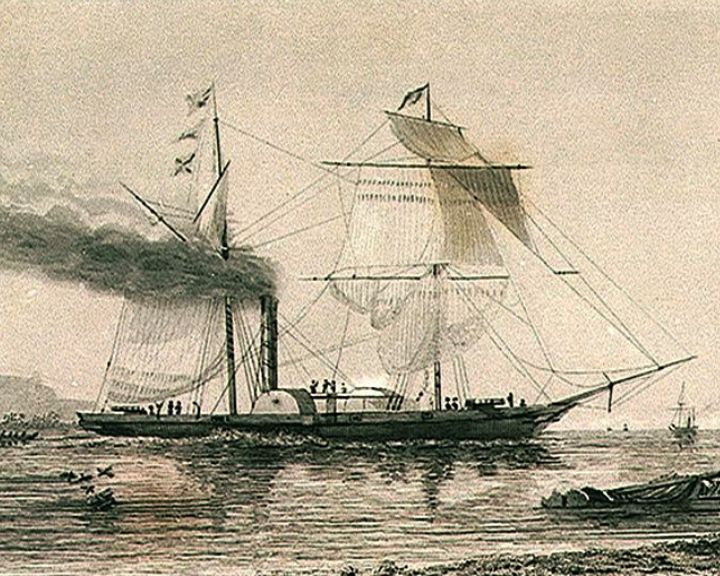 Nemesis — British steam and sail powered warship The first British ocean-going iron warship; also the first iron ship to sail around the Cape of Good Hope. She was greatly effective in the First Opium War. The Chinese referred to her as the "devil ship". LAUNCHED: 1839 → FATE: Ended up in Calcutta, 1855. |
 Orion, RMS — British ocean liner First to offer modern passenger comforts in ocean travel including air conditioning.. She was launched at England from Brisbane, Australia by wireless remote by the Duke of Gloucester. She served as a troop ship in World War II, then converted to a passenger liner in 1946. LAUNCHED: 1934, December 18 → FATE: Broken for scrap at Antwerp, Belgium in 1963. |
 President, SS — British paddle steamship, with sails; ocean-going First steamship lost at sea on a transatlantic run, taking with her all 136 on board. Constructed with a third deck on top of the hull and designed with luxurious staterooms, she was top heavy and rolled excessively. LAUNCHED: 1840, August → FATE: Lost during a gale off Nantucket Shoals March of 1841. |
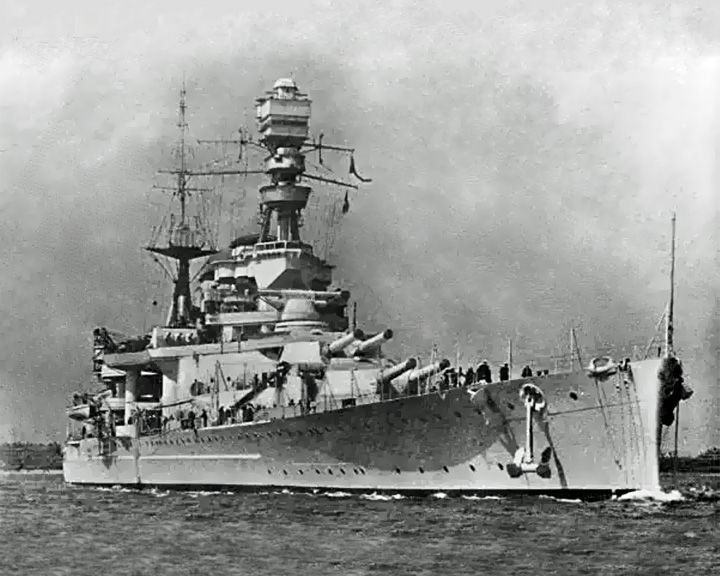 Prince of Wales, HMS — British battleship She and Repulse were the first capital ships to be sunk solely by naval air power on the open sea. She was involved in several key actions of the World War II, including the Battle of the Denmark Strait against the German battleship Bismarck. LAUNCHED: 1939, May 18 → FATE: Sunk on December 10, 1941 by Japanese air attack off Kuantan, South China Sea. |
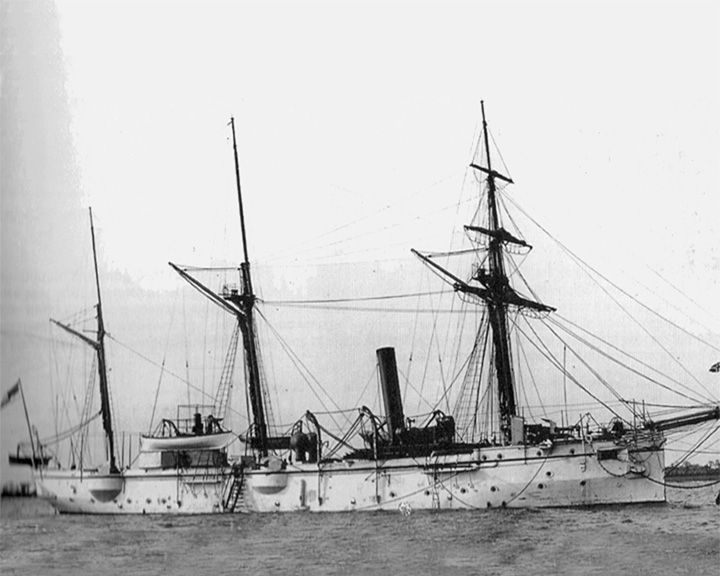 Rattler, HMS — British sloop made of wood with metal frame First warship to adopt a screw propellor. In March 1845, she beat HMS Alecto in a series of races, followed by a contest in which she towed Alecto backwards at a speed of 2 knots (3.7 km/h). LAUNCHED: 1843 → FATE: Broken up 1856. |
 Resolution, HMS — British Collier The first ship to cross the Antarctic Circle reaching beyond latitude 71 degrees south. She was the ship on which Captain James Cook made his second and third voyages of exploration in the Pacific. LAUNCHED: 1770 → FATE: Taken by the French June 10, 1782, renamed La Liberté and ended up rotting in Narragansett Bay not far from Cook's other ship, Endeavour. |
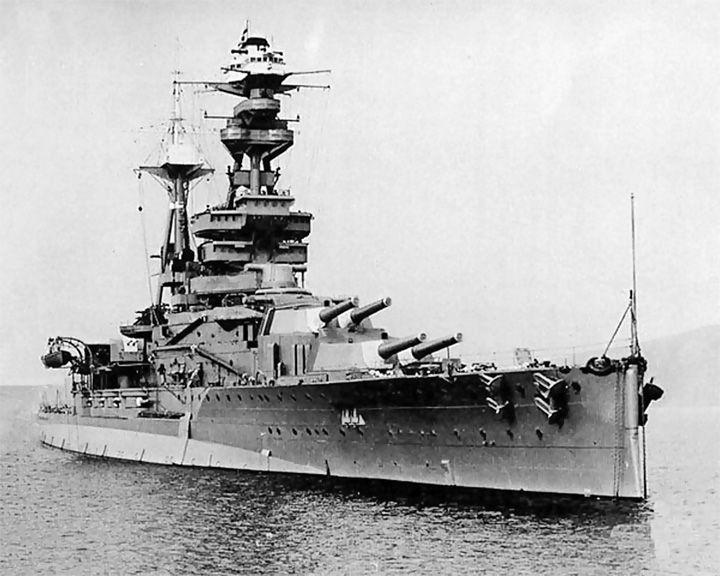 (Another (Another
Royal Oak, HMS — British Battleship, Revenge-class The first of five Royal Navy battleships and battlecruisers sunk in the World War II. When she was torpedoed, 835 of her 1,234 crew were killed. The brass letters of her name were removed from the sunken ship and are now displayed in the Scapa Flow visitor center. LAUNCHED: 1914, November 17 → FATE: Was sunk in Scapa Flow in October 1939 by a German U-boat, |
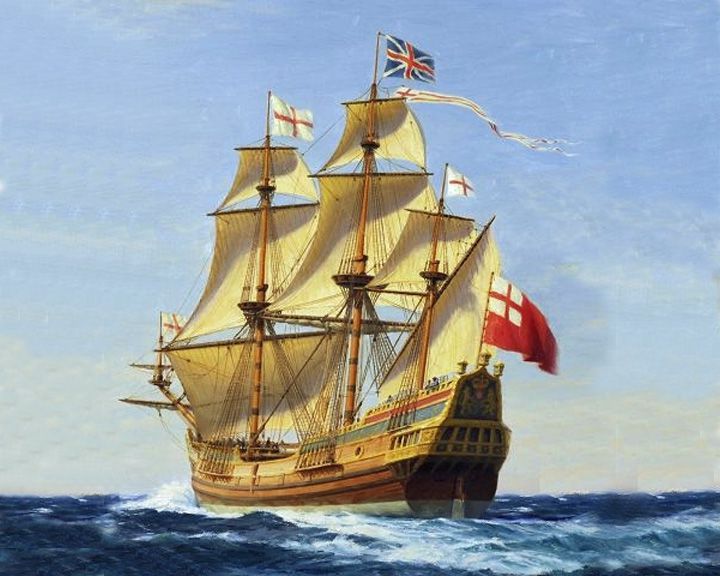 Sea Venture — English merchant ship; purpose-built First dedicated emigration ship as part of the Third Supply mission to the Jamestown Colony. During the storm, massive leaks developed because of faulty construction. All 150 people aboard and one dog made it to shore safely. LAUNCHED: 1609 → FATE: Damaged in a hurricane and scuttled at Discovery Bay, June 1609. |
|
Page 5
|
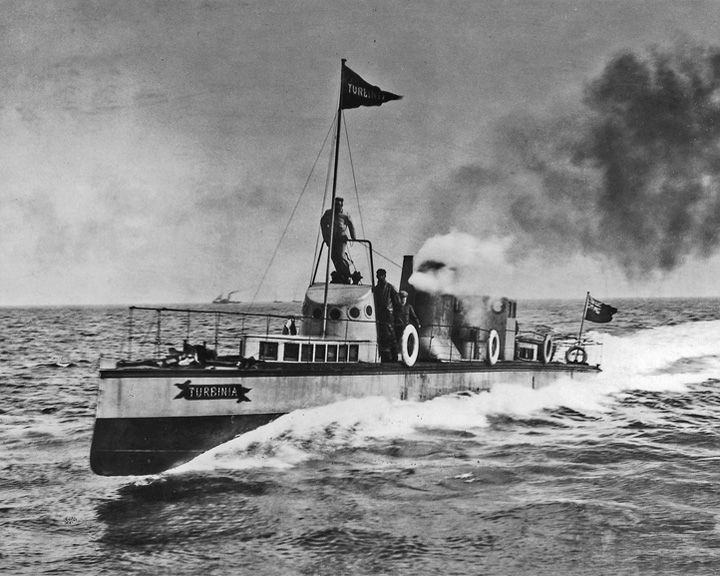 Turbinia — British steamship First steam turbine-powered steamship and the fastest ship in the world at that time at over 34 knots. She showed up unannounced at the Fleet Review for Queen Victoria's Diamond Jubilee at Spithead in 1897, racing up and down the ranks of other ships. LAUNCHED: 1894, August 18 → FATE: On display at the Discovery Museum at Newcastle upon Tyne, England. |
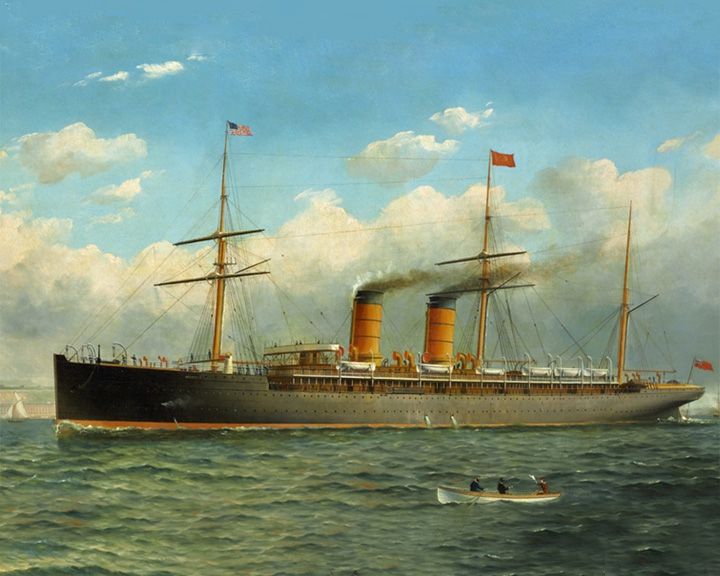 Umbria, RMS — British ocean liner With her sister ship, Etruria, the last two transatlantic ocean liners fitted with auxiliary sails. In May of 1903, the Mafia tried to blow her up but failed. LAUNCHED: 1884, June 18 → FATE: Scrapped in 1910. |
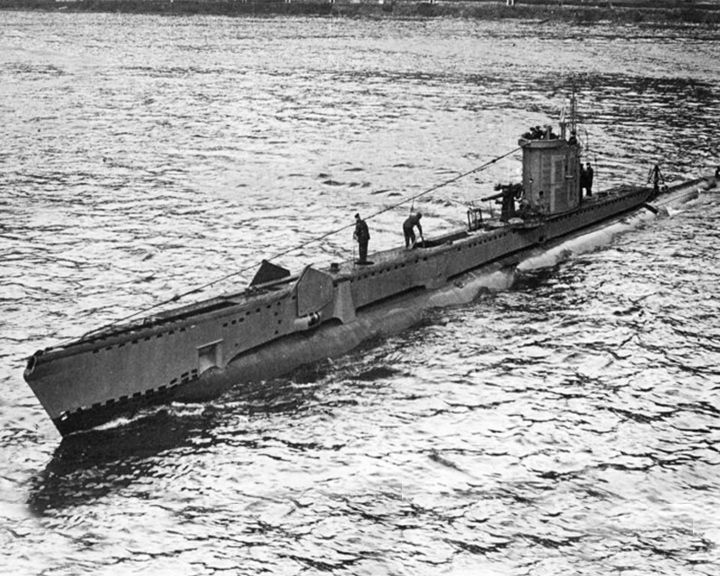 Venturer, HMS — British V-class submarine First time in naval warfare that one submarine stalked and sank another while both were submerged. Based on Enigma decrypts, she sought out and destroyed the German submarine U-864 in the Fedje area, February 9, 1945. LAUNCHED: 1943, May 4 → FATE: She was sold to Norway and renamed HNoMS Utstein. She was scrapped and broken up in 1964. |
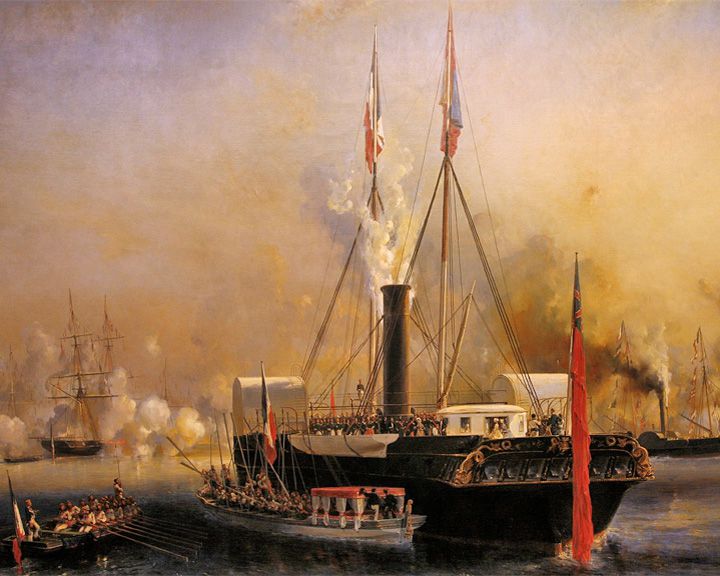 Victoria and Albert, HMY — British royal yacht; twin-paddle steamer First steam powered royal yacht built in Britain. The Queen and Prince Albert loved cruising around the coast of England. The yacht was renamed Osborne after the launch of HMY Victoria and Albert II January 16, 1855. LAUNCHED: 1843, April 25 → FATE: Scrapped, 1868. |
 Warrior, HMS — British warship First British iron-hulled, armour-plated warship. She was the largest, fastest, most heavily armed and armored warship up to that time. LAUNCHED: 1860, December 18 → FATE: Currently berthed in Portsmouth, England as a museum. |
The number of British/English Ships; First, Last, Oldest listed is 36 The contents of this page are available under the Creative Commons Attribution-Share Alike 3.0 Unported license and the GNU Free Documentation License (GFDL). |
|
|
First Ship on each page
| |
| Page | Ship Name (Country and Type) |
| 1. | Argus, HMS (British aircraft carrier) |
| 2. | Devastastion, HMS (British Devastation-class ironclad) |
| 3. | Hood, HMS (British battle cruiser) |
| 4. | Nemesis (British steam and sail powered warship) |
| 5. | Turbinia (British steamship) |
British/English | |
| 1. | Argus, HMS British aircraft carrier |
| 2. | Belfast, HMS British town-class cruiser |
| 3. | Birkenhead, HMS British frigate |
| 4. | Challenger, HMS British corvette |
| 5. | City of Adelaide English clipper ship |
| 6. | Darling, HMS British torpedo boat destroyer |
| 7. | Devastastion, HMS British Devastation-class ironclad |
| 8. | Dreadnought, HMS British dreadnought battleship |
| 9. | Driver, HMS British paddle sloop |
| 10. | Endeavour, HMS British collier |
| 11. | Furious, HMS British battlecruiser |
| 12. | Great Britain, SS British steamship |
| 13. | Great Western, SS British paddle steamboat |
| 14. | Holland I, HMS British submarine |
| 15. | Hood, HMS British battle cruiser |
| 16. | Invincible, HMS British battlecruiser |
| 17. | K-13 British K-class submarine |
| 18. | Kathleen and May British three masted schooner |
| 19. | Lightning, HMS British torpedo boat |
| 20. | Mary Rose English carrack-type |
| 21. | Maryland Dove American merchant vessel |
| 22. | Matthew English caravel |
| 23. | Nemesis British steam and sail powered warship |
| 24. | Orion, RMS British ocean liner |
| 25. | President, SS British paddle steamship |
| 26. | Prince of Wales, HMS British battleship |
| 27. | Rattler, HMS British sloop made of wood with metal frame |
| 28. | Resolution, HMS British Collier |
| 29. | Royal Oak, HMS British Battleship |
| 30. | Sea Venture English merchant ship |
| 31. | Turbinia British steamship |
| 32. | Umbria, RMS British ocean liner |
| 33. | Venturer, HMS British V-class submarine |
| 34. | Victoria and Albert, HMY British royal yacht |
| 35. | Warrior, HMS British warship |
|
About the Data There are more than 400 ships in this database, but the initial list is only for famous ships names that begin with letters "A-B". For other listings, use the country and type tabs. Touching (or cursor over) a ship image produces an enlargement. Touch anywhere else (or move the cursor off the image) to close the larger image. Touching (or clicking on) any underlined name will link to a page with more information. Although submarines are usually called boats, they are grouped with ships here. Most of the information comes from Wikipedia. |
^
Other Pages in Names Galore: | |
Famous Cowboy Names Sports Team Names Other Name Lists | Name Generators Naming Fun Stories about Names |